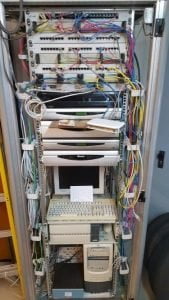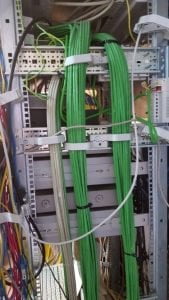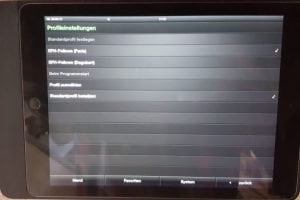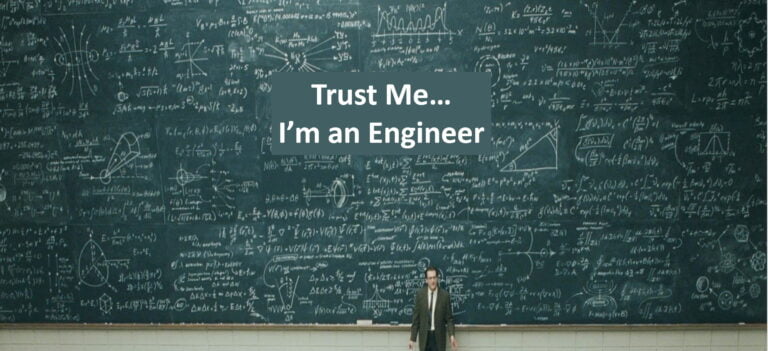Transformation vs Disruption
Transformation… I am hearing more and more talk about how companies are seeking to transform themselves, or that they are launching a transformation initiative. And as expected, there is the corresponding increase in transformation conferences, symposia, articles and books.
But what is “transformation”?
One definition for transformation is; “a thorough or dramatic change in form or appearance.”
“… thorough and dramatic…” Seems rather subjective.
[pause for contemplation…]
In essence, transformation occurs when something that was turns into something completely different. In nature, we can see examples of transformation when a caterpillar turns into a butterfly or when a volcano creates an island.
But does transformation really occur in business? If so, what does it really look like and under what circumstances might it actually happen? For your consideration, a few examples;
- International Business Machines (IBM); At the company’s founding, IBM manufactured commercial scales, punch-card clocks, and tabulators. Over time, these offerings evolved into computer systems (including minicomputers, mainframes, and personal computers) and computer peripherals such as storage devices and printers.
But in the early 1990’s, IBM was in peril, even facing bankruptcy, if it had stayed on its present trajectory. In 1993, Lou Gerstner (an IBM outsider) was hired as CEO and Chairman. His obvious first priority was to stop the bleeding and stabilize the company. Once this was accomplished, he had to formulate a vision for IBM’s future.
Gerstner recognized that computer equipment (hardware) was quickly becoming commoditized and he had to seek a growth sector within the information technology space. He eventually decided that services – including software, business consulting, and information technology support – were the future vision for IBM. He worked at shedding the hardware (selling-off most of the divisions) and building the service offering (including the acquisition of PWC – Price Waterhouse Coopers) as he pursued this vision.
Transformation: business equipment to business services
- Nokia; We all know of Nokia to be a manufacturer of mobile telephones. But Nokia was originally founded in Finland in 1865 as a pulp mill (for making paper). It expanded into electrical generation, then into manufacturing rubber products and cables. It wasn’t until the late 1960’s that Nokia became involved in communication and other business equipment and, eventually, into mobile telephones. In the late 1980’s and 1990’s, Nokia divested itself of its founding business units.
Transformation: pulp, rubber, and cables to electronic devices.
- General Motors (GM); Not all transformations result in a complete redefinition of a company’s offering. Take the case of General Motors as an example. Once an automobile manufacturing powerhouse with a 50%(+/-) of US marketshare in the early 1960’s, GM saw it’s marketshare decrease and unit costs increase over a period of 40 years. Everyone knew the causes of the company’s ills (competing brands, labor wage structure, lack of innovation and vision), but the leadership lacked the will (maybe the power, maybe the talent) to effect the fundamental changes necessary to stop the bleeding.
The brutality of the financial crisis of 2007-2008 hit GM especially hard. It forced the company into bankruptcy in June of 2009. It emerged one month later – shed of all its past sins and deficiencies and emerging as a viable company once again.
Transformation: non-viable company structure to viable company structure.
- Xerox: Founded in 1906, Xerox started as the Haloid Photographic Company, manufacturing photographic paper. Seeing an opportunity in an image-printing process that involved electrically charged plates and toner – and after considerable time and investment in developing the technology – the company eventually designed and produced a commercially viable photo-copier in the 1950’s and changed its name to Xerox.Transformation: manufacturer of photographic paper to imaging devices such as copy machines, scanners, printers, and toner.
In each of the cases cited above, a company was one thing and became something completely different – a transformation.
Disruption is: “to interrupt the normal course or unity.”
So, with disruption, we take something that already exists – be it a way of doing things, or a deliverable – and change it. Hopefully it’s for the better. This is the essence of “continuous improvement”, to see an opportunity to improve on something, then effect the improvement.
For instance; a company might put in place a new piece of equipment to produce better product – or to produce product in a better way (there is a difference). Or they might introduce a new offering for their customers or hire a new vice-president in charge of something. All these events can be disruptive.
They might also introduce a new technology.
But is the introduction of a new technology itself transformational? or disruptive?
Whether it was the steam ship, or automobile, or airplane – the introduction of a new technology is a curiosity – even a nuisance – at first. As it becomes more widely accepted, it becomes disruptive. But I would propose that we recognize that a technology was transformational only in hindsight.
For example, take the Segway; rumors of the introduction of a mode of transport that was going to transform mobility led to wild speculation as to what it might be. This excitement reached a crescendo as it was finally introduced. But the hype far exceeded the reality and the excitement soon abated as the fact of its being a novelty became apparent.
On the other hand, in its early days, the internet was just a communication medium for connecting government and academic computer systems – and the average person got along just fine without it. It wasn’t until Senator Al Gore took the initiative in creating the internet and it came into the hands of the general public that the real innovation occurred – turning the internet into the neural network of the world that it is today.
But the advocates and players of the internet in these early days of public availability overplayed their hands. There was talk of a “new economy”; where wealth was not measured in cash, but in “eyeballs to the website”. And all those companies that were “brink and mortar” were dinosaurs – soon to become extinct. The bursting of the “dot-bomb” bubble reaffirmed and put to rest forever (?) that cash was king.
However, this bursting injected a healthy dose of reality and established a more pragmatic view – making future expectations of the internet more measured. In hindsight, it is obvious that the internet was transformational. It is pervasive. We spend much of our day on it in one form (or on one platform) or another. And we probably could not get along as easily without it anymore.
Certainly the invention or introduction of a new technology – whether the Internet of Things (IoT), Digitization, Artificial Intelligence, Blockchain (and Cryptocurrency), 3-D Printing, Industry 4.0 (they even have an Industry 5.0 now, although a Wikipedia page for it does not yet exist), and so on – are disruptive. Each builds on a something that already exists and changes it. In some cases, a definition on what they actually are has not been settled upon.
But are they transformational? It is too early to tell.
Maybe they are transformational in a targeted manner – transforming specific industries like the internet transformed the travel industry. For instance, who buys an airline ticket from an actual travel agent anymore?
Similarly, Digitization and IoT has transformed the logistics industry – reporting material movements, productions, and consumptions in real-time.
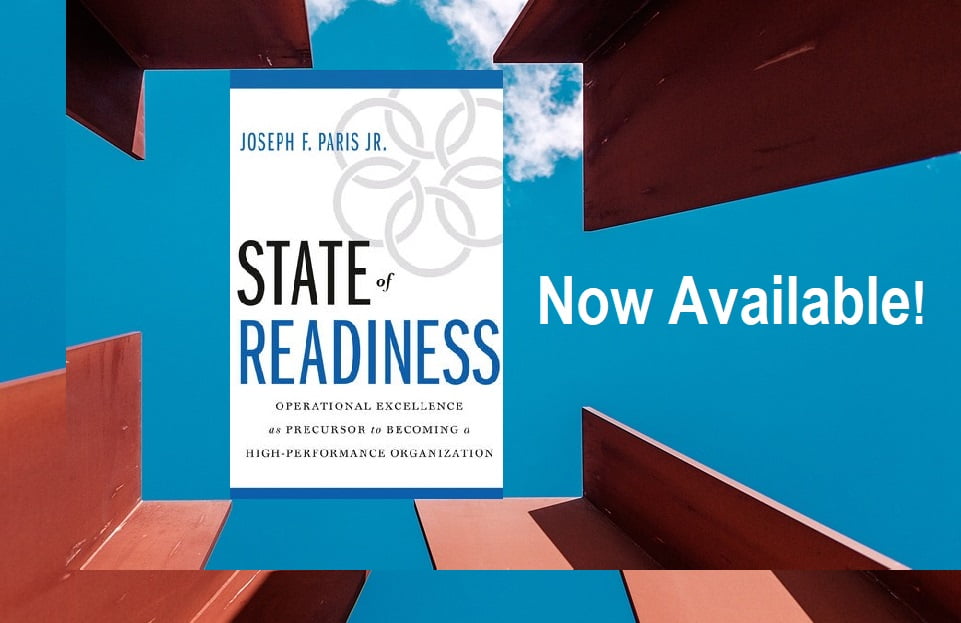
It’s not enough to have continuous improvement, we need disruption!
… And even disruption is not enough, we need transformation!
Every “new” thing or way is introduced with a degree of hype – a level of excitement that has the potential for exaggerating and distorting the value of the benefits while downplaying the shortcomings and risks involved. The faux sense of urgency and fear of missing out yanks on our emotions.
We want in. But do we really?
Think of every “new and improved” bottle of laundry detergent. Other than the labeling, what is really “new and improved”?
I am reminded of the old carpenter’s saying; “Measure twice, cut once.”
Perhaps that is how we should approach the “new”. Evaluate. Determine what is real and what is speculation – and remember, hope is dope. Make sure we are in a cerebral state and not an emotional state before we decide (sorry De Beers).
Maybe that is the real difference between transformation and disruption; time.
With disruption, the rate of change is slower and the changes themselves more measured. But with transformation, the rate of change is accelerated and the impact of the changes are more dramatic and amplified.
Transformation – true transformation – causes us to react and engage in meaningful ways that disruption never does.
Case Study: The house we are renting in Germany.
The house is about 20 years old or so. And whoever designed it and had it built was a real tech-head – but more WinTel than Apple. By that, I mean that the user experience took a back-seat to the technology.
There is a “server room” which contains an actual computer rack which holds the server, the routers, and all of the related accessories (including a digital telephone and integrated muzak system). To ensure it is always running, there are three gigantic Uninterruptible Power Supplies (UPS’s) made by American Power Conversion Corporation (now owned by Schneider Electric).
The server runs all of the functions of the house; lights, surveillance, telephone, piped-in muzak, shutters (called Rollläden in German), heating – everything except for the plug-in electrical outlets (and even some of those used for bedside lamps).
These devices connect to the server by means of routers mounted on the rack. From these routers run countless miles worth of ethernet cable which go to every room in the house, to every device, and to every device controller. Obviously, the house was built before “WiFi”.
For instance, take a light switch; when someone pushes the “on button”, a command is sent through the ethernet cable to the router and server, which in turn sends a command through another ethernet cable to the controller which turns-on the electricity to the device.
To turn the device off, you must push the “off button”.
The logic of electrical switches is binary. Meaning they are either on or off. Why there are separate “on” and “off” buttons escape me – it adds an unnecessary level of complexity. Why could there not be just one button which is “on” when hit once and “off” when hit again. There is a label to help guide the use, but it’s worthless in the dark. And when the light is “on”, the indicator lights on both the “on” and “off” side are lit. Confusing and frustrating.
Adding to the irritation, there is a delay between pushing the button and the command reaching the device and taking effect. This causes the operator to second-guess the selection and hitting the other button – or another button on the same panel.
Then there is the heat. If you want to change the temperature in the room, you must go to the control panel. In some cases, this can be three flights of stairs away. Why I can’t control the temperature of the room from the radiators in the room escapes me.
There are telephones everywhere. We never used them. We could never figure out how to get them to work. And why would anyone need a telephone next to the toilet? What could be so important that I would want to answer a call (not to mention, making a call) while sitting on the can? Must we always be connected? Can’t we have a moments peace anywhere anymore?
Most of the electric-controlled shutters work. Some don’t. Some work only when they feel like working. The electrician says it’s a computer problem, the computer technician says it’s an electrical problem. At this point, my GSF is a 1.5.
The strangest thing is the bathroom. There is a divider in the middle of the bathroom that is about 6-feet long, 4-feet high, and 2-feet thick. On the one side is the toilet and on the other side is the bidet. To go from one to the other requires a “walk of shame”. Instead of waddling like a Hobbit, I use paper.
I would rather live in a cabin in the woods with candle-light, a wood stove, and an outhouse than live in this “high-tech house”. It would be easier, less frustrating, and more reliable.
Indeed, whoever had it built forgot that “complexity kills”. The entire house is an ergonomic abomination and whoever designed it certainly did not work for Apple (even though the control panel itself is an iPad). It demonstrates that one should approach new technologies with pragmatism – even a bit of cynicism.
Whether continuous improvement, disruption, or transformation, approach with caution – for, whether it’s with the outputs or the inputs (or both), there is the peril that goes along with establishing and chasing false expectations. Understand there are known unknowns and unknown unknowns.
When it comes to something new, try to separate the hype from the reality. Maybe a bit of cynicism is a good thing, even a necessary thing.
by Joseph Paris
Paris is the Founder and Chairman of the XONITEK Group of Companies; an international management consultancy firm specializing in all disciplines related to Operational Excellence, the continuous and deliberate improvement of company performance AND the circumstances of those who work there – to pursue “Operational Excellence by Design” and not by coincidence.
He is also the Founder of the Operational Excellence Society, with hundreds of members and several Chapters located around the world, as well as the Owner of the Operational Excellence Group on Linked-In, with over 60,000 members. Connect with him on LinkedIn or find out more about him here: www.JosephParis.me/card



